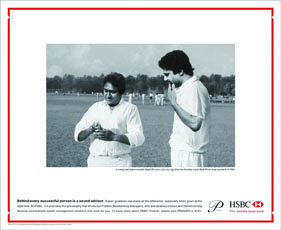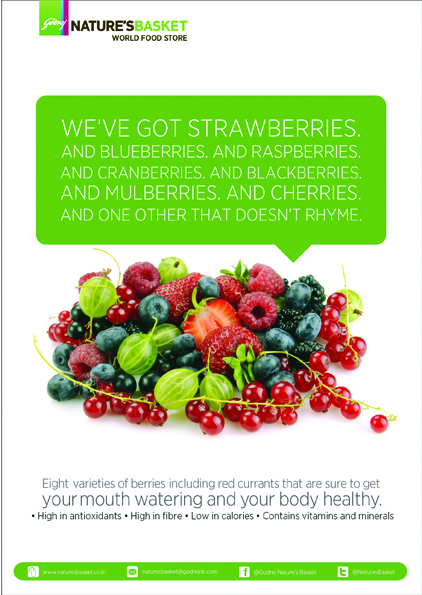
How did you get into advertising?
Academics were never really my bag. My parents hoped I would turn into a professional (engineer or doctor). They made me go through the grind of doing science for junior college but I flunked miserably. They then made me do B Com hoping I’d turn into a CA.
For quite some time after I graduated, I didn’t know what I wanted to do except that my school teacher in class 9 and 10 had spotted that I could write. That was always on the back of my head and I thought I could do something about it. I enrolled for journalism but didn’t see that through either, because I realised I didn’t want to write articles in newspapers.
My first job was as a purchase department clerk at National Plywood Industries in Kolkata, pushing registers and making payments. This is when I was introduced to the world of advertising, while releasing cheques to Ulka who were handling the business. I happened to see print ads and storyboards attached to invoices and I remember telling the account executive that I could do work like this. But my parents decided to leave Kolkata to settle down in Parur, near Kochi in Kerala, which is where I met Gireesan who ran a small agency called Space Ad.
He introduced me to Bill Bernbach and David Ogilvy and Gabriel Garcia Marquez and copious quantities of Hercules Rum. However, I shortly realised that if stayed on in Kochi, I’d be consuming more rum than advertising.
I then put together some courage and moved to Mumbai. I got a job with a small agency called Dart. They used to do work for Eagle Flasks and had a pretty famous campaign ‘A lot you can do with Eagle’.
Within a year I moved to an agency called Sphere which was run by Sajid Peerbhoy. The agency was much later bought over by Ogilvy. When I joined the agency it was handling Monginis, Garnier and Borosil among others. On the basis of the portfolio I had built there, I managed to get into JWT.
I had very good senior people at the agency like Deepa Kakar, the late Sudhir Deokar and Anil Warner under whom I released my first TVC. I was fortunate to write a commercial for Ceat Tyres. In those days (1994), they actually ran a road safety campaign and it wasn’t a brand ad. It was way ahead of the time and the client was really bold to take on a stance like that. It was my first commercial and it went on to win loads of awards as well. It gave me confidence that I could get better at this. But what happened at the same time was that a lot of work of mine was getting bombed by the servicing heads as that was the department that took the call. That’s when I thought maybe I need to try out at a more creative outfit. I was at the agency for eight months.
I went to meet Mohammed Khan who ran Enterprise and he said, ‘Welcome to advertising, when can you start?’ in typical Mohammed fashion. I liked the sheer confidence of the man in trashing everything he saw around him and with good reason. Nothing has changed about him.
He gave me a job and I was there for a short while. For some reason I didn’t have the greatest luck at Enterprise. I did some good work but not too much of it saw light. I met an amazing bunch of other creatives there. Zarvan and Prashant who run Ideas@work, Bhupal Ramnathkar who runs Umbrella Design, Sanjay Khare who’s at Pinstorm are just a few of them. I was surrounded by amazing talent and I was at the agency for a year and a half before I joined Contract.
My first few years at the agency were fantastic. In between, there was a bit of a slowdown where I didn’t put out enough good work - something that I can’t attribute one particular reason for. A really large body of my work happened at Contract and it was a very interesting, successful journey. I joined in Mumbai, before going to head Delhi. Then I came back to Mumbai to head the agency. Then I shared it with Raghu and Manish, then with Juju. Then I headed Mumbai and South before I quit and joined Madison BMB. Contract was a very long journey (17 years) but a very rewarding one.
How different has it been working at BMB and Contract?
Madison BMB is a part of Madison World and you need no introduction to Sam (Balsara). It’s a great organisation with incredible people running various businesses. BMB is run by Prabha Prabhu who is the CEO and I’m the creative head. It’s our mandate to make the place successful by getting on board more businesses.
I wasn’t in the absolute leadership role at Contract and that’s one obvious big difference.
At BMB, we’re a very small, focussed and impatient team. We want success as soon as we can have it and we’re moving in the right direction. We’re small in size but big in intent. We’re trying to create good work and there’s some appreciation as well as some knocks. We go with utmost sincerity to our client, well studied and with proper consideration that this will indeed work for the brand. That’s the way we’re approaching life at BMB – we’re hungry and we try to be as foolish as we can. The impatient person that I am, I can’t say we’re rocketing away, but we’re doing well.
What clients do you currently handle?
We handle Hypercity, Treo, Milton, Godrej Nature’s Basket, VVF (Jo, Doycare, Doy Kids soaps), Neelkanth Developers, Brother Printers and a brand we’ve signed on but not announced yet. Further results are awaited on a couple of businesses as well.
On a daily basis, we are trying our best to create differentiated communication solutions for our clients and create value. Agility has become a mantra. The sense of responsiveness and responsibility have both grown exponentially in the last one and half years. And the good news is, the needle is moving forward, slowly but surely, bit by bit, brick by brick. The period between April and December 2013 has already seen a nearly 150 per cent growth. But there’s a very, very long way to go yet. And I have to continue to turn the impatience into a positive output.
What have been your learnings?
Even if your first idea is the best, let the way by which you discover that be after exploring many, many more. Always keep the idea in focus but also be as responsive and intuitive as possible.
Whether with a client or a colleague, honesty is indeed the best policy. It’s usually appreciated. And even if it’s not, try your sincere best to explain your point of view. If that too is not accepted, work your way around to understanding the logic of the other side.
Try and mentor the young as much as possible. Give valid inputs. Have open exchanges. Be friendly, approachable.
If you truly believe in an idea, let your sincerity shine through. Hopefully, the client will see the value in it.
Never over-resource: the lesser the numbers, the more to think about and do.
You need to sweat bullets over the execution; otherwise the best idea can come down too.
It’s a people’s business and how you interact with clients, study the consumer, interact with people you work with, all of these things matter. You can’t be popular at all times and you’ve to try getting the best out of yourself and the people you’re working with. The learning process never stops and you can’t ever say you’ve figured everything out. I’m happy to keep learning about people.
Lastly, how do you try and understand the digital age? Many times what one also realises is, when one takes a non-traditional idea to the client, there is a need to understand whether it’s relevant for them or if one is going to be able to execute something that’s cooking in one’s head.
Is digital threatening traditional media?
The business of communication is evolving everyday. It’s not just a case of traditional versus digital. Every element has a significant role to play in the communications mix, whether it is a TV spot, a digital activation, a PR exercise, user generated content for YouTube, an on-ground activation, a radio-led contest, or an app that makes your life simpler, or something else.
Obviously, a better understanding of technology that facilitates better engagement is deeply necessary today. There is daily evolution in this space and one obviously struggles to keep up. But if you can piece all these elements together and still present a cohesive brand voice, then bingo! Obviously, that’s easier said than done. You have to keep trying. And you have to remember that no matter what part of the puzzle you are currently creating, engagement is the name of the game.
What’s your take on controversies surrounding awards?
Because I’ve been around as long as I have, I’ve won a lot of awards on a lot of campaigns right from my very first commercial. I know what it means to win big and I know what disappointment comes with not winning. I don’t think the relevance of awards is meant to go away overnight. Good work should be celebrated. May be there are some agencies that have focussed too much on awards for the sake of awards, i.e. creating work specifically for that. I would urge anybody young or old to create good work, because that will always win. The craft enhancement as we used to call it at Contract, is something you can explore but don’t let that become your raison d'etre (reason to exist). Then you’re only doing that and that’s no way to exist because no consumer sees that work.
Taking a good idea proactively to a client, getting him excited about it and finding a minimised channel through which it is relevantly shared with consumers - there is no worry about that. There’s nothing wrong with doing great pro bono work for NGOs. That actually makes a difference because people end up sharing that on Facebook and YouTube.
Who would you call your mentors?
My earliest mentor was Mohammed Khan. He was the one who taught me that getting a good idea wasn’t enough. Seeing it through and crossing the line was what he taught me. Nobody talked craft like he did and not a lot of people after him have got it either.
Craig Davis – the worldwide creative head of JWT. I had interactions with him while I was at Contract. He had devised the creativity scale and that was very well thought through. It wasn’t creativity for creativity’s sake but genuinely took you from 1 (an idea that could be damaging to the client) to 10 (world beating). We would be incredibly happy with 6 or 7 (rewarding or innovative) and that was virtually impossible. We got a few at Contract.
I think Piyush Pandey has taught me even though I’ve never worked with him. I look up to him for bringing Indian-ness to advertising. Once I started thinking on those lines, I thought it was a great way to connect to both the classes and the masses.
Ravi D (Deshpande) is someone who I’ve worked very closely with. He taught me the importance of a good idea and the craft.
They are all very different people but stellar creatives.

























.jpg&h=334&w=500&q=100&v=20170226&c=1)












